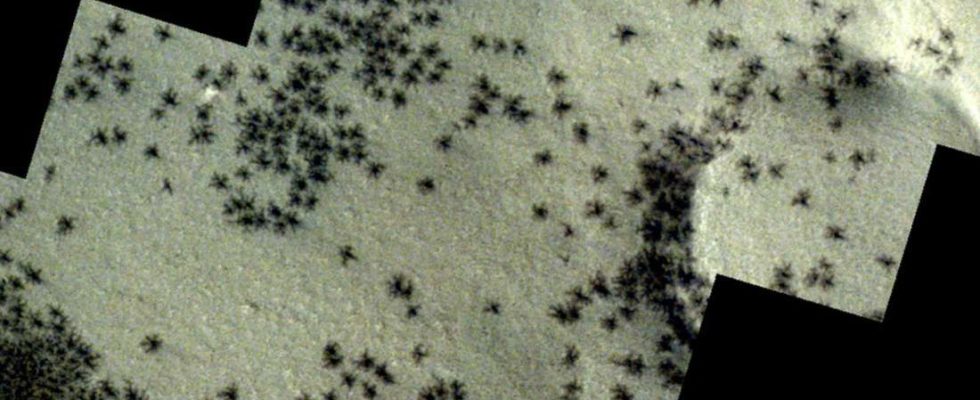Press
Esa speaks of “signs of spiders on Mars”. Have researchers discovered living animals on the red planet?
Munich – It is one of the moving questions in Mars research: Was there once life on the red planet? Now the European space agency Esa has reignited the discussion. On its website, the authority headlines: “Signs of spiders on Mars” – albeit with a wink.
ESA shares photo from Mars Express: “Telltale traces of spiders”
Esa reports on its websitethat the space probe Mars Express (an ESA mission) photographed the “telltale spider tracks” scattered across the southern polar region of Mars. Only recently did the space probe deliver unique images of the red planet. The space agency is quick to clarify: “These small, dark structures are not true spiders, but are formed when the spring sun hits the layers of carbon dioxide that were deposited during the dark winter months.”
Sunlight therefore causes carbon dioxide ice at the bottom of the layer to be converted into gas, which then rises and breaks through the ice sheet above. “In the Martian spring, the gas flows out, dragging dark material to the surface and shattering layers of ice up to a meter thick.”
“Spider-shaped” patterns on Mars are formed by gas from dark dust
This dark dust-laden gas shoots up through cracks in the ice in the form of tall fountains or geysers before falling back down and settling on the surface. This creates dark spots with a diameter of between 45 meters and one kilometer. This would also create the “spider-shaped” patterns. Even when looking at the scale of the Esa photo, it becomes clear that the supposedly spider-sized objects are in reality significantly larger.
| June 2, 2003 |
| December 2003 |
| In operation |
| Atmosphere, surface and subsurface of Mars; Martian moons Phobos and Deimos |
Mars Express photographs spider shapes on the edge of “Inca City”
The “spiders” captured by the Mars Express camera lie right on the edge of a part of Mars that the researchers call “Inca City” – a linear, almost geometric network of mountain ridges reminiscent of Inca ruins should. Inca City, better known as Angustus Labyrinthus, was discovered in 1972 by NASA’s Mariner 9 probe.
ESA mission: Mars Express
Mars Express has revealed a lot about Mars over the past two decades. The orbiter continues to take images of Mars’ surface, map its minerals, explore the composition and circulation of its atmosphere, probe beneath its crust, and study the Martian environment.
He provided the most comprehensive map of the chemical composition of the atmosphere, examined Mars’ innermost moon Phobos, and traced the history of water on the planet. It was proven that environmental conditions once existed on Mars that may have been suitable for life.
(Source: European Space Agency)
Esa reports: “We still don’t know exactly how the Inca city came into being. It could be that sand dunes have turned to stone over time. “It is possible that material such as magma or sand is seeping through fractured layers of Martian rock.” However, they could also be so-called “eskers”, winding structures that are associated with glaciers. (bk)

